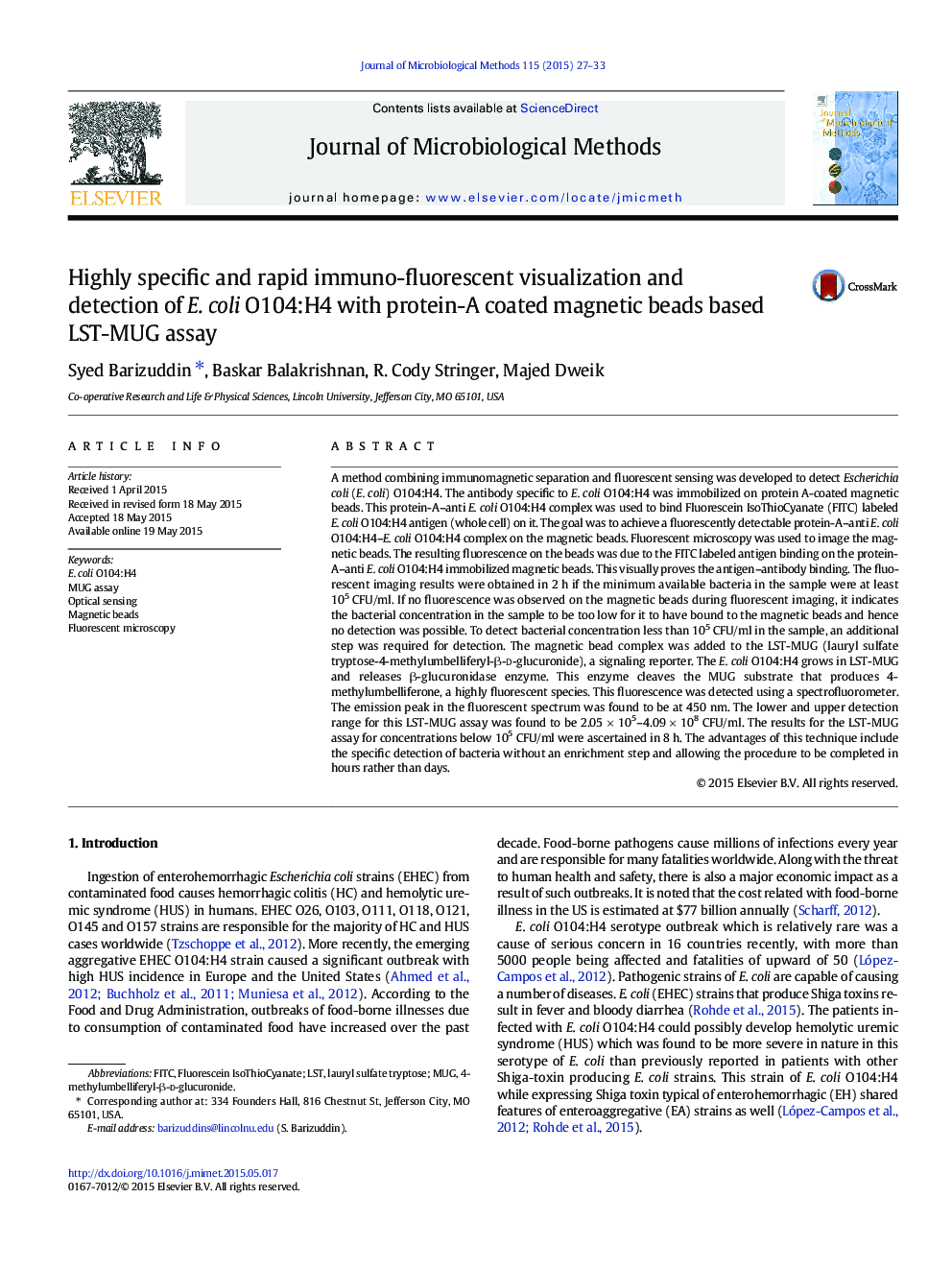| کد مقاله | کد نشریه | سال انتشار | مقاله انگلیسی | نسخه تمام متن |
|---|---|---|---|---|
| 8421517 | 1545928 | 2015 | 7 صفحه PDF | دانلود رایگان |
عنوان انگلیسی مقاله ISI
Highly specific and rapid immuno-fluorescent visualization and detection of E. coli O104:H4 with protein-A coated magnetic beads based LST-MUG assay
دانلود مقاله + سفارش ترجمه
دانلود مقاله ISI انگلیسی
رایگان برای ایرانیان
کلمات کلیدی
موضوعات مرتبط
علوم زیستی و بیوفناوری
بیوشیمی، ژنتیک و زیست شناسی مولکولی
بیوتکنولوژی یا زیستفناوری
پیش نمایش صفحه اول مقاله

چکیده انگلیسی
A method combining immunomagnetic separation and fluorescent sensing was developed to detect Escherichia coli (E. coli) O104:H4. The antibody specific to E. coli O104:H4 was immobilized on protein A-coated magnetic beads. This protein-A-anti E. coli O104:H4 complex was used to bind Fluorescein IsoThioCyanate (FITC) labeled E. coli O104:H4 antigen (whole cell) on it. The goal was to achieve a fluorescently detectable protein-A-anti E. coli O104:H4-E. coli O104:H4 complex on the magnetic beads. Fluorescent microscopy was used to image the magnetic beads. The resulting fluorescence on the beads was due to the FITC labeled antigen binding on the protein-A-anti E. coli O104:H4 immobilized magnetic beads. This visually proves the antigen-antibody binding. The fluorescent imaging results were obtained in 2 h if the minimum available bacteria in the sample were at least 105 CFU/ml. If no fluorescence was observed on the magnetic beads during fluorescent imaging, it indicates the bacterial concentration in the sample to be too low for it to have bound to the magnetic beads and hence no detection was possible. To detect bacterial concentration less than 105 CFU/ml in the sample, an additional step was required for detection. The magnetic bead complex was added to the LST-MUG (lauryl sulfate tryptose-4-methylumbelliferyl-β-d-glucuronide), a signaling reporter. The E. coli O104:H4 grows in LST-MUG and releases β-glucuronidase enzyme. This enzyme cleaves the MUG substrate that produces 4-methylumbelliferone, a highly fluorescent species. This fluorescence was detected using a spectrofluorometer. The emission peak in the fluorescent spectrum was found to be at 450 nm. The lower and upper detection range for this LST-MUG assay was found to be 2.05 Ã 105-4.09 Ã 108 CFU/ml. The results for the LST-MUG assay for concentrations below 105 CFU/ml were ascertained in 8 h. The advantages of this technique include the specific detection of bacteria without an enrichment step and allowing the procedure to be completed in hours rather than days.
ناشر
Database: Elsevier - ScienceDirect (ساینس دایرکت)
Journal: Journal of Microbiological Methods - Volume 115, August 2015, Pages 27-33
Journal: Journal of Microbiological Methods - Volume 115, August 2015, Pages 27-33
نویسندگان
Syed Barizuddin, Baskar Balakrishnan, R. Cody Stringer, Majed Dweik,